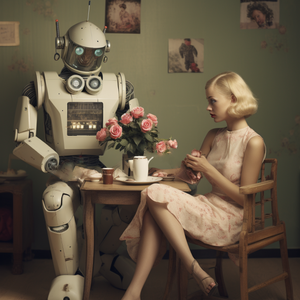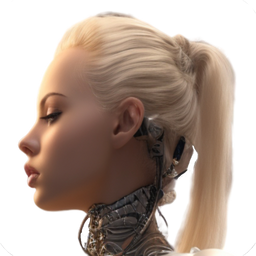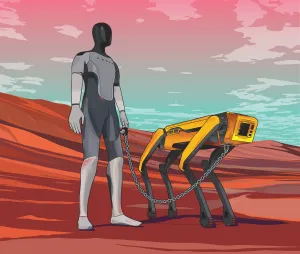In the 1960s, the concept of a robot that could assist with household chores was the stuff of science fiction. Today, it's a reality. Domestic robots, once restricted to factory floors, have made their way into our homes, offering assistance with everything from cleaning to companionship. How did we get here? In this article, we will trace the journey of domestic robots from their origins in industrial settings to their current roles in our daily lives. Along the way, we will explore the technological advancements that have shaped their evolution, the emergence of companion robots, the key milestones in their history, and the impact of these robots on our daily lives. Join us as we uncover the intriguing history of domestic robots and ponder what the future holds for these mechanical helpers.

The Birth of Domestic Robots
The notion of a mechanical assistant has always fascinated humanity. As early as ancient Greece, inventors like Hero of Alexandria devised automated machines, offering glimpses of a future where machines would aid human life. However, the leap from myth to reality didn't happen until the latter half of the 20th century.
It was in the 1960s that the first true robots appeared, albeit in industrial settings. These machines, designed to perform repetitive tasks, were hailed as a revolution in manufacturing. But the idea of robots in the home remained elusive. In those early days, robotics technology was rudimentary, and the machines were large, expensive, and ill-suited for domestic environments.
The 1980s and 1990s saw the first attempts to bring robots into the home. These early domestic robots were simple in design and function, often more novelty than utility. They could vacuum a room or serve drinks, but their limited capabilities and high price tags made them inaccessible to most households.
The challenges faced by these early robots were numerous. Their sensors were primitive, their movements clunky, and their "intelligence" rudimentary. The dream of a truly functional domestic robot seemed far off, a concept that belonged in the pages of a science fiction novel rather than the real world.
Despite these challenges, the pioneers of domestic robotics forged ahead, driven by the belief that robots could transform our homes and our lives. These early innovators laid the foundation for the remarkable advancements we see today, setting the stage for a new era of domestic robots that are more capable, more affordable, and more integrated into our daily lives than ever before.
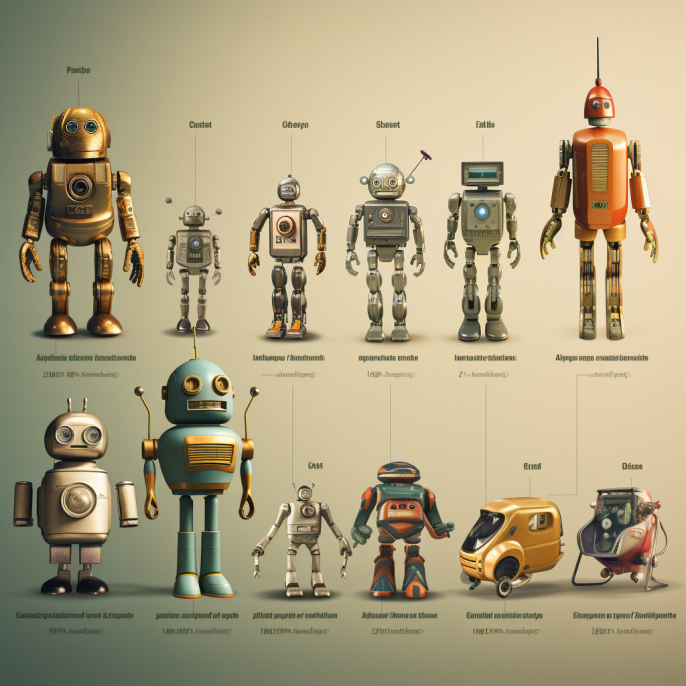
Technological Advances and Modern Domestic Robots
The journey from the first clunky, cumbersome domestic robots to today's sophisticated machines has been driven by remarkable advancements in technology. The fields of artificial intelligence, machine learning, and robotics have all played a crucial role in this transformation.
In the early days, domestic robots were often programmed with simple rule-based systems, which limited their ability to adapt and learn. However, as AI and machine learning technologies evolved, robots could learn from their environment and adapt their behavior accordingly. This has led to a new generation of domestic robots that can perform a wide range of tasks with a level of previously unimaginable proficiency.
Today's domestic robots are equipped with advanced sensors, cameras, and microprocessors that allow them to perceive and interact with their environment. They can navigate through homes, avoiding obstacles, and even recognize and respond to human voices and gestures. These capabilities have opened up new possibilities for domestic robots to assist with daily tasks, such as vacuuming, mopping, and even cooking.
The rise of the Internet of Things (IoT) has further enhanced the capabilities of domestic robots. By connecting to other smart devices in the home, domestic robots can now control lighting, adjust thermostats, and even order groceries. This level of integration and automation has transformed the way we live and interact with our homes.
In addition to their practical applications, domestic robots have also become companions for many. Advances in AI have enabled robots to engage in conversations, recognize emotions, and provide companionship. For the elderly and those living alone, domestic robots have become invaluable companions, providing not only assistance with daily tasks but also a sense of connection and companionship.
The journey of domestic robots from their early days on factory floors to their current roles in our homes has been driven by a relentless pursuit of innovation. As technology continues to evolve, we can expect domestic robots to become even more integrated into our daily lives, further blurring the lines between the human and the machine.

Domestic Robots as Companions
The evolution of domestic robots has not only been marked by their increasing capabilities in assisting with daily tasks but also their ability to provide companionship. The progression from simple, rule-based machines to intelligent, interactive companions has been driven by the remarkable advancements in artificial intelligence and robotics.
The notion of robots as companions emerged from the desire to address the growing problem of loneliness and social isolation, particularly among the elderly and those living alone. These robots, equipped with advanced AI capabilities, can engage in conversations, recognize emotions, and provide a sense of connection that was previously unattainable from machines.
As these companion robots became more sophisticated, they began to play a more substantial role in the lives of their users. They can now provide reminders for medication, detect signs of health issues, and even assist with physical tasks. This level of support and companionship has become invaluable for those who may not have access to regular human interaction.
Yet, the introduction of companion robots raises philosophical and ethical questions that cannot be ignored. Can a machine genuinely provide companionship? Can it replace the human connection that is so vital for our emotional well-being? The answers to these questions are complex and multifaceted, and they challenge our understanding of what it means to be human.
As we ponder these questions, we must also consider the historical and cultural context in which domestic robots have emerged as companions. Throughout history, humans have sought companionship in various forms, from pets to artificial constructs such as dolls and statues. The emergence of companion robots represents a continuation of this historical trend, driven by technological advancements and societal needs.
The role of domestic robots as companions is still evolving, and their impact on our lives is yet to be fully understood. As we continue to explore the possibilities and implications of these robots, we must also consider the ethical dilemmas they present. In doing so, we can ensure that the integration of domestic robots into our lives is done thoughtfully and responsibly, striking a balance between innovation and the preservation of our humanity.
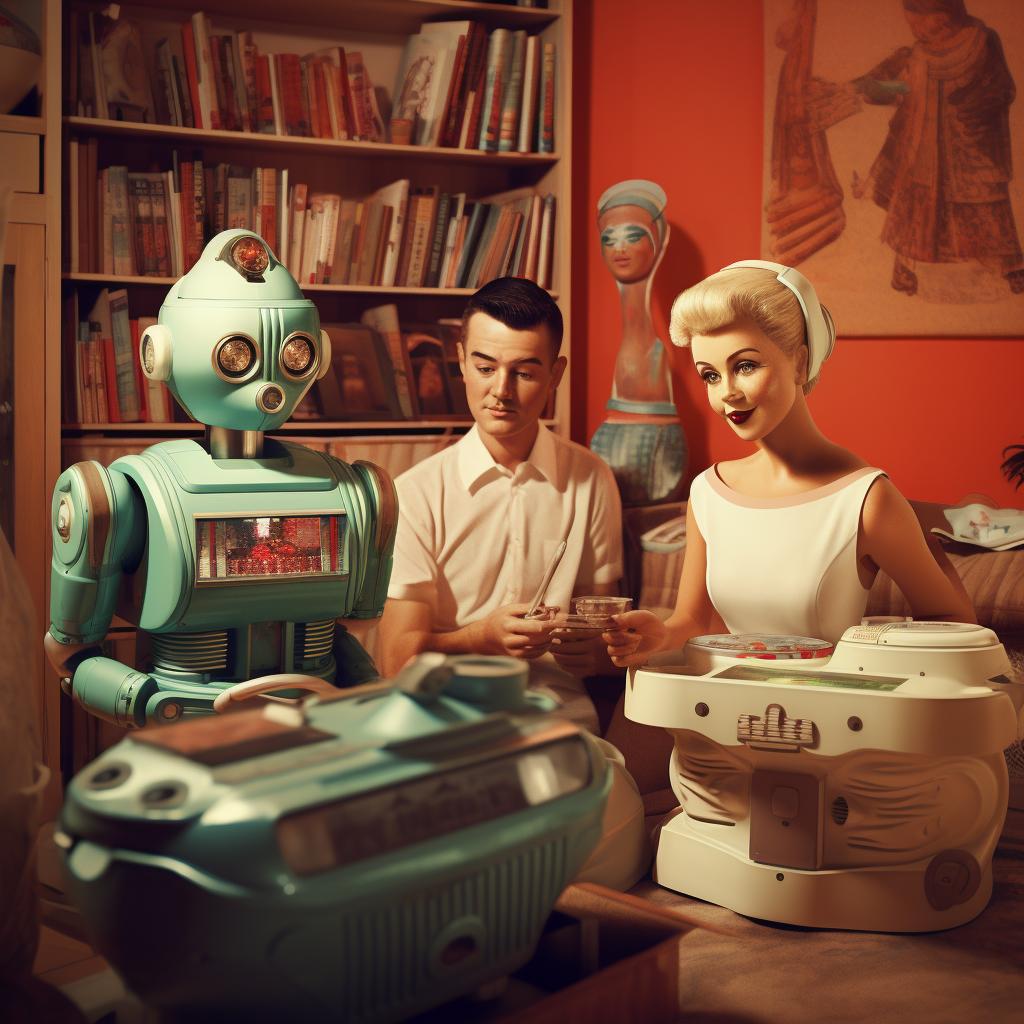
Key Milestones in the History of Domestic Robots
The historical journey of domestic robots has been marked by key milestones that have shaped their functions and capabilities. These significant events have paved the way for the increasing integration of domestic robots into human lives, transforming the way we perceive and interact with these machines.
The 1960s saw the birth of the first industrial robots, designed primarily for factory floors. These early robots were programmed to perform repetitive tasks, offering little room for interaction or engagement. It wasn't until the 1980s that the concept of domestic robots began to take shape. These robots were primarily envisioned as household assistants, capable of performing simple chores like vacuuming and mopping.
As technology advanced, so did the capabilities of domestic robots. The 1990s saw the emergence of robots that could interact with their environment, learn from their experiences, and adapt to new tasks. This was a significant departure from the rule-based programming of earlier robots, offering a glimpse into the potential of domestic robots as intelligent companions.
The turn of the millennium brought with it a wave of innovation that further transformed domestic robots. Advancements in machine learning and AI enabled robots to recognize and respond to human emotions, paving the way for the development of companion robots. These robots could engage in conversations, provide emotional support, and offer companionship to those in need.

The introduction of robots as companions was met with both excitement and skepticism. While many hailed the potential of these robots to alleviate loneliness and provide support, others questioned the ethics of replacing human interaction with machines. This debate continues to this day, as we grapple with the implications of integrating domestic robots into our lives.
As we reflect on the history of domestic robots, we must also consider the cultural context in which they emerged. From ancient myths of automatons to modern-day science fiction, the concept of robots has captured the human imagination for centuries. The emergence of domestic robots as companions is a continuation of this cultural fascination, driven by technological advancements and societal needs.
The history of domestic robots is a testament to the remarkable progress we have made in the field of robotics. From simple, rule-based machines to intelligent companions, domestic robots have come a long way in their journey. As we continue to explore the possibilities and implications of these robots, we must also consider the ethical dilemmas they present. In doing so, we can ensure that the integration of domestic robots into our lives is done thoughtfully and responsibly, striking a balance between innovation and the preservation of our humanity.
The Impact of Domestic Robots on Daily Life
The integration of domestic robots into our lives has brought about profound changes, reshaping the way we live and interact. As we reflect on the journey of domestic robots from factory floors to homes, it is essential to consider the broader implications of these advancements on our daily lives.
The advent of domestic robots as household assistants has undeniably simplified daily tasks and chores. Whether it is vacuuming, cooking, or gardening, domestic robots have proven to be valuable additions to the modern household. By automating these mundane tasks, domestic robots have freed up time for individuals to pursue their passions and hobbies.
Beyond the practical benefits, domestic robots have also emerged as companions for those who may feel isolated or lonely. The elderly, people living alone, or individuals with disabilities have found solace in the company of domestic robots. These robots, equipped with AI and machine learning capabilities, can engage in conversations, provide emotional support, and even detect health issues.
Despite the advantages, the increasing integration of domestic robots into our lives raises important ethical questions. Are we replacing human interaction with machines? Are we becoming overly dependent on technology, losing touch with our humanity? As we navigate the complexities of these dilemmas, it is essential to strike a balance between embracing innovation and preserving the essence of human connection.
The history of domestic robots serves as a reminder of the remarkable progress we have made in the field of robotics. As we continue to explore the potential of domestic robots, we must also consider the cultural and societal implications of their integration into our lives. By doing so, we can ensure that domestic robots enhance our lives while preserving the values and connections that make us human.
As we look to the future, it is clear that domestic robots will play an increasingly important role in our lives. Their potential to assist with daily tasks, provide companionship, and improve our quality of life is undeniable. However, as we embrace the possibilities that domestic robots offer, we must also be mindful of the ethical dilemmas they present. By striking a balance between innovation and humanity, we can ensure that domestic robots contribute positively to our lives while preserving the human connections that define us.

Embracing the Future While Honoring the Past
The journey of domestic robots from the factory floors to our homes has been nothing short of remarkable. We have witnessed their transformation from rudimentary machines to sophisticated companions, capable of assisting with daily tasks and providing emotional support. But, as we stand on the cusp of a new era in robotics, it is essential to remember the roots of this technological marvel and the lessons it offers.
The history of domestic robots is a testament to human ingenuity and the relentless pursuit of innovation. It is a story of overcoming technological limitations, embracing new ideas, and pushing the boundaries of what is possible. As we look to the future, we must carry this spirit of innovation forward, exploring new frontiers in robotics and artificial intelligence.
At the same time, we must be mindful of the ethical dilemmas that come with the integration of domestic robots into our lives. In our quest for progress, we must not lose sight of the values that make us human. We must strike a balance between embracing the possibilities that domestic robots offer and preserving the essence of human connection.
As we ponder the future of domestic robots, let us not forget the journey that brought us here. Let us remember the milestones that shaped their evolution and the challenges that were overcome along the way. Let us honor the past while embracing the future, ensuring that domestic robots enhance our lives while preserving the values and connections that define us.
In conclusion, the history of domestic robots serves as a reminder of the remarkable progress we have made in the field of robotics. As we continue to explore the potential of domestic robots, we must also consider the cultural and societal implications of their integration into our lives. By doing so, we can ensure that domestic robots enhance our lives while preserving the values and connections that make us human.
When comes to domestic robotics there's no one size fits all but rather a higher segmentation of the same base product for specific needs.


